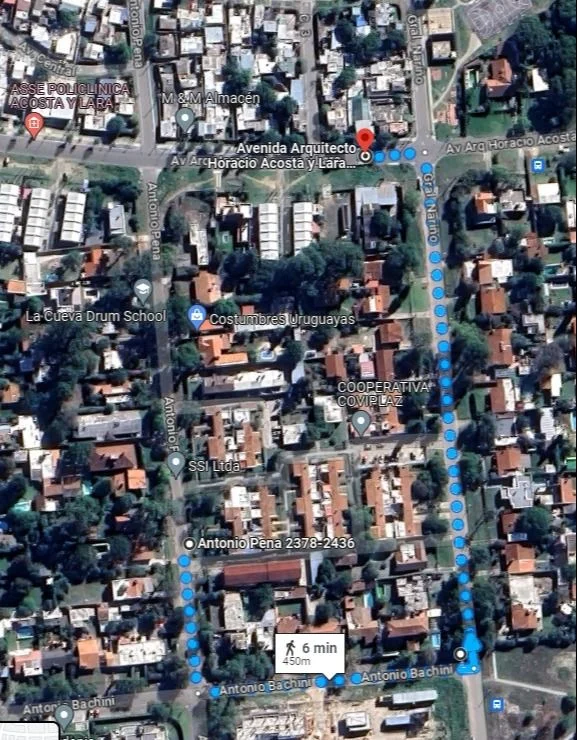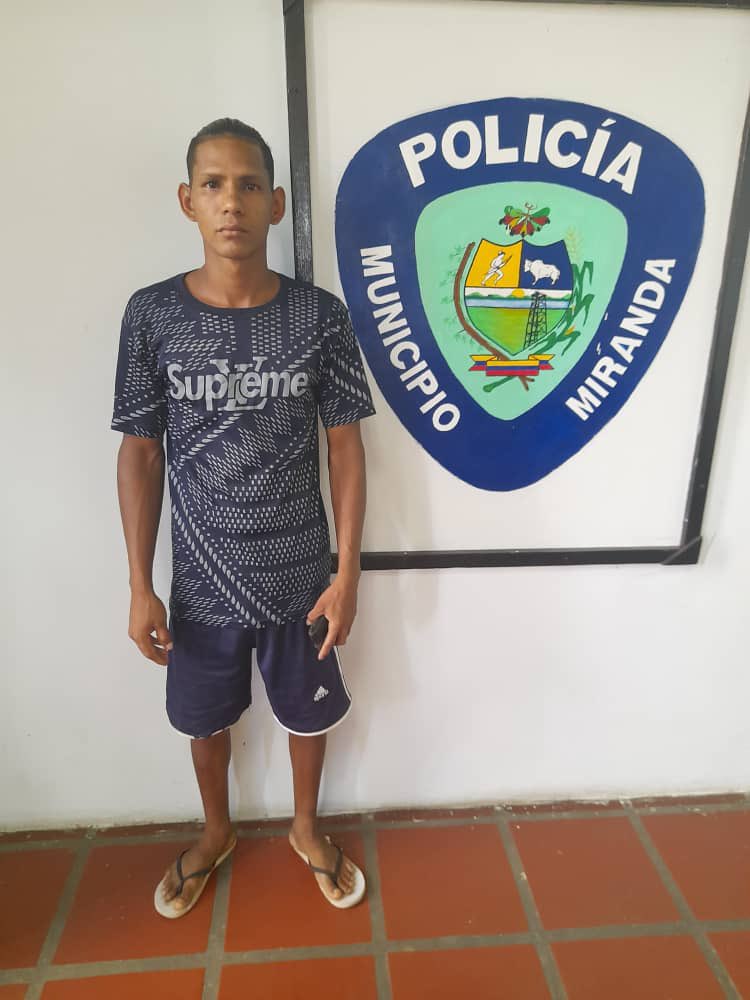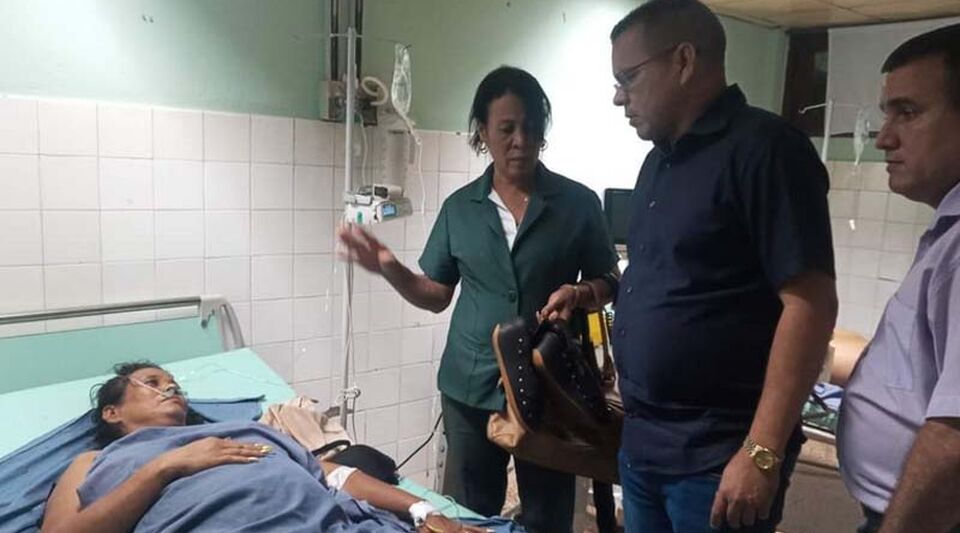While the Prosecutor remembers that Guillermo Marenales (20 years old) walked with his three friends in the middle of the street “carefree”, “laughing” and “joking” because he was going to meet a group of girls – they were going to celebrate their birthday of his girlfriend in a square – the defense of the policeman who shot him in the back focuses on his –alleged– “sudden movement”, the traces of gunpowder on his hands and his previous accusation for a crime of robbery.
But beyond what each party can focus on, Judge Alejandro Asteggiante – who must define the fate of the accused police officer – was able to see with his own eyes what happened at dawn on July 7, 2020. The videos were projected on an audience that witnessed The Observer.
A group of four young people who were walking down the middle of Antonio Pena street – going from Acosta and Lara – come across a car parked on the edge of the street (there is no sidewalk).
While the three friends of Marenales continue walking in the middle of the street, the victim approaches the car and stands on the passenger side, which was not facing the street but rather a house. There he approaches the glass and it is not clear if he tries to take the door handle to open it or simply approaches. When she sees that there are two people inside, she keeps walking down the middle of the street.
That is when the defendant, in the police uniform, opens the door, being on the driver’s side, takes half of his body out and after a few seconds -in which Marenales turns and walks towards the car to have an exchange of words – The defendant pulls out a weapon, Marenales turns to flee, and the police officer shoots him in the back. Both police officers got out of the car and began to chase the youths.
That sequence was taken by multiple cameras from Antonio Pena street. Then, there are cameras around Nariño and they show three young people running towards Acosta and Lara: the victim was no longer there.
For the Homicide Prosecutor of 3er Turn –Adriana Edelman and Dahiana Padilla– the images show how the defendant fired “at close range” and at “high power” against unarmed youths. For the defenders of the policeman –Daniel García and Carla Pereira– it is not so clear that Marenales was not armed and what existed between the youths and the policemen was a “confrontation”.
But one of the key elements of the case is not disputed by anyone: it was filmed on a private camera with unusual clarity. Ten minutes after the crime, the policemen walked around the scene and picked up five bullet casings from the ground. The defendant and the other policeman –who was convicted of abuse of duties– They hid what had happened: they kept those casings and did not notify their superiors of what had happened.

The first white spot in Antonio Pena is where –approximately– the crime occurred. The second, at the corner of Bachini and Nariño, was where the body of Guillermo Marenales was found. The point about Acosta and Lara points out where the three young people stopped running
However, in the rest of the theory and intentions, they differ. Edelman and Padilla maintain that Marenales approached the car because he told his friends that he was going to urinate on him, that when he sees the policeman’s weapon “he tries to cover himself with his arms, while the defendant was sheltered in his vehicle.” In turn, if there was a possibility that Marenales wanted to steal the car, that “is not even enough to set up a preparatory act for a crime of theft” in addition to the fact that he immediately gave up when he saw that there were people inside. The police have a duty to use force in a “rational” manner.
García and Pereira insist that it was a confrontation and stressed that more than half an hour later calls from neighbors continued to arrive that there were people “at the shots” in the area, so it is not clear that that was the shot that was fired. killed the victim. In turn, they highlighted several times that Marenales had traces of gunpowder on his hand. This, technically, may be because he fired shots or touched his own wound, or touched some lead material some time before.
Prosecutor Edelman requested that the police officer accused of a crime of homicide by way of eventual intent be sentenced to a sentence of 6 years in prison. Lawyer Pereira pleaded for the acquittal of her client.
The memory in first person and a gift that I wanted to send
The body of Guillermo Marenales appeared under a bush in Bachini and Nariño. That was where his friends had left him “hidden” “so they wouldn’t do anything to him,” according to one of them, who was 15 years old at the time, at the oral trial. About half an hour later, her sister and a friend of hers found him.
Edelman recounted that, since he heard the detonations – there were at least five shots fired by the defendant and his partner – Marenales ran that block “evicted”. The 15-year-old witness recounted that he “was staying, you could tell” mainly because he was holding on to his neck.
Another of his friends – a distant cousin who was 18 years old, is now in prison and also testified in the trial – said that when Marenales fell on that corner, he asked her to get up but the victim told him no, they should leave. and they will leave it there.
According to the first witness, all he did was remove a chain that he was wearing and intended to give to his girlfriend for her birthday. She gave them to one of them so that they could send it to her.
Both agreed that before the crime, the victim had told them that he was going to urinate against the car and the second witness said that he had warned him that there were people inside. When Marenales noticed him and continued on his way, the policeman opened the door, took half of his body outside and, according to one of the witnesses, “a crossover of words” was heard: the young man apologized, the policeman spoke back and he spoke back back. The other witness said he did not remember the exchange.
Despite repeated questions from the defense, both denied that anyone had carried weapons that day or had defended themselves against the attack with them.
Faced with some questions, the witnesses said they did not remember with certainty. “He has to put himself in our place, we were minors, he practically killed him in front of me,” recalled one of them and added: “He shot at everyone, not just at him, he could have hit anyone.”
The defendant’s defense asked the two why they decided to go tell the family directly – who lived above Acosta and Lara – and not call the police.
The second of the witnesses answered: “I notified the family. The person who shot was a policeman, he did not help him either.”






